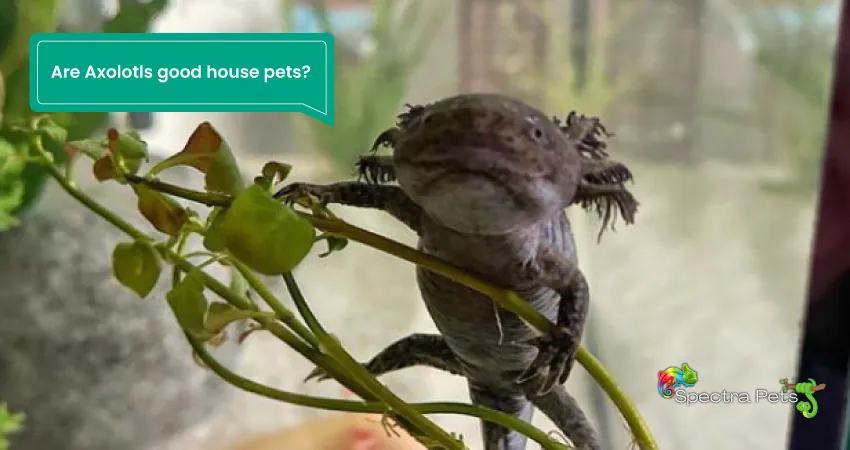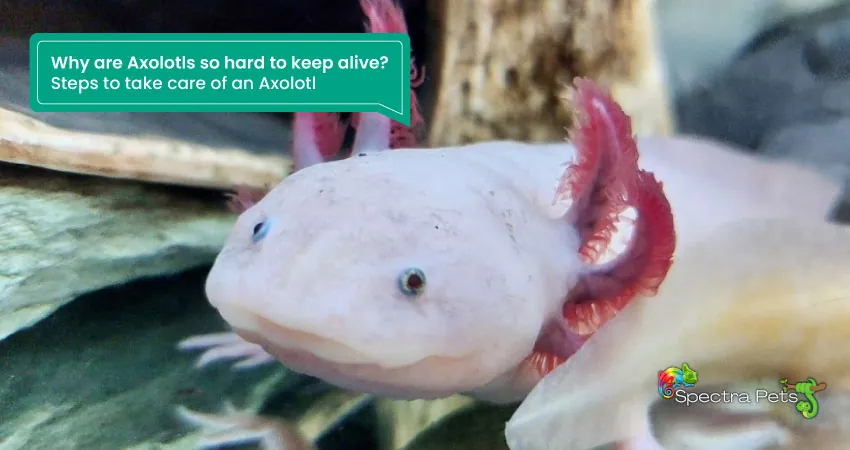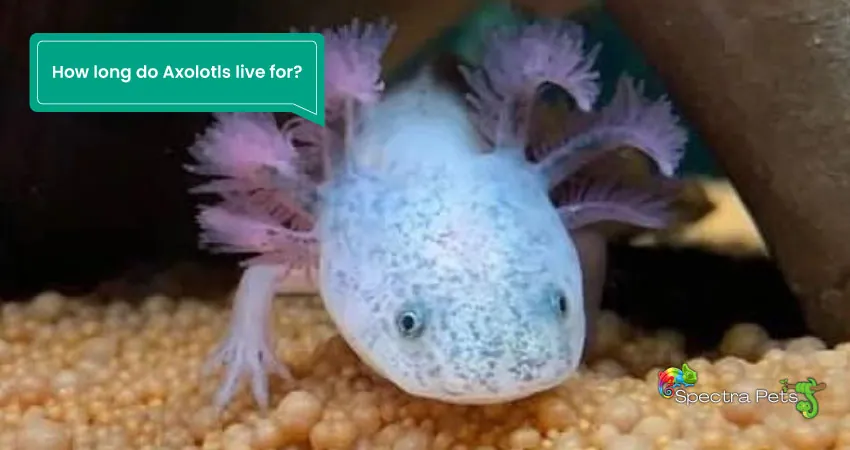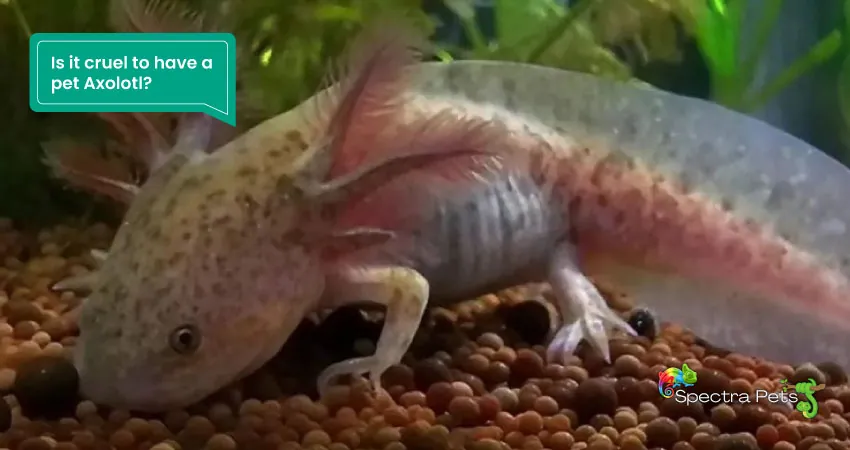Axolotls, also known as Mexican walking fish, are salamander-like creatures that share a lot of traits with fish. Their beautiful appearance makes them a sight to behold in any aquarium, and their scarcity makes them special as well.
This ambystoma is very popular with owners of exotic pets because of two things. They look extremely cute, and they need little maintenance, even though they are very fragile. Due to the active ban on axolotl ownership in many states, having them as a pet can also become quite difficult and expensive.
However, if it was legal, would owning an axolotl be a good idea? Are they beginner-friendly? Let’s find out!
Are Axolotls good house pets?

Axolotls make great pets for any aquarium, including the one at your home. These salamander-like creatures have a strange but rather attractive appearance. They are also pretty active animals that will run around in the aquarium and are quite fun to interact with.
These amphibians are quite simple to feed and have a decent lifespan. Despite being carnivores, they are quite social and get along pretty well with other tank mates. All these traits speak to the fact that this ambystoma makes decent house pets.
Why are Axolotls so hard to keep alive? Steps to take care of an Axolotl

Okay, here’s the bottom line. Axolotls require a great deal of preparation in order to properly take care of them. They have very specific needs that must be met in order to ensure their health and wellbeing. However, once you’ve got everything set up, they are not very hard to maintain.
Cycling the Tank
The initial setup requires the most effort and time, as you will need to provide the right environment for your axolotl. It can take about two months to cycle the tank, and during this time, you should measure the water parameters regularly and make adjustments if necessary. Do not put your axolotl in the aquarium until the water has completed its cycle.
Maintaining the Tank
Once the tank has been cycled, you can place your axolotl in the tank and perform routine maintenance to ensure a healthy environment. It’s important not to clean the filters with regular water, as the chemicals can harm the beneficial bacteria colony in the filters. Gently rinse the filters with treated water occasionally, but take care to preserve some of the good bacteria.
Ideal Water Parameters
The ideal range for nitrate levels is between 20 and 40 (lower is better). A properly cycled tank will convert 2 ppm of ammonia into 0 ppm of ammonia and 0 ppm of nitrites. There are manuals and testing kits available to help you understand the process.
Tank Size and Space
The tank should be at least 20 gallons in size, with an additional 10 gallons for each additional axolotl. Axolotls prefer more horizontal space than vertical space, so keep that in mind when choosing a tank. It’s best to keep axolotls together if they are the same gender and size.
Temperature and Ventilation
The ideal temperature for the tank is 64 °F, between 55 °F and 68 °F. Depending on the climate, you may need to purchase small, powerful fans to keep the water cool. If you use other cooling techniques, a cooler may not be necessary.
Filter and Water Flow
A suitable filter and gentle water flow are essential. A filter that is too aggressive or has strong water flow can stress your axolotl, but this can be corrected by blocking the flow with an object. Using spray bars is also an option to control water flow.
Light and Darkness
Axolotls prefer dimly lit environments, so provide them with areas of sufficient darkness. This can be achieved by providing hides, shielding them from external sources of light, and keeping them away from direct sunlight. If you decide to install a light in the aquarium, remember to turn it off completely at night or for 5 hours.
Food and Nutrition
It’s essential to provide your axolotl with suitable food, such as earthworms (red wigglers, nightcrawlers), daphnia, or axolotl pellets. You can store earthworms in your freezer and defrost some each day to feed your axolotl. Bloodworms can be given as a treat, but they are not a complete meal.
Hides and Bedding
Axolotls need hides that can accommodate them completely and allow them to move freely. The hides should have smooth edges and surfaces to avoid damaging the axolotl’s skin.
If you cannot find sand, you can use river stones or heavy objects to stop the axolotl from rolling over. You should not put anything that can fit inside the axolotl’s mouth, because they may try to swallow it.
Health Monitoring
Once everything is set up, caring for an axolotl is straightforward. Monitor their health and follow simple treatment guidelines if they experience any issues such as fungus, bacteria, or parasites.
Regular water tests, proper nutrition, and good hygiene will help keep your axolotl healthy and happy. If you notice any signs of illness, seek advice from a veterinarian experienced in treating aquatic species.
How much money does it cost to take care of Axolotls?
Axolotls are quite expensive creatures. Exotic variants can cost north of $100, while mass-bred axolotls cost under $70. There are some variants up for sale on the internet for as much as $750!
In addition to purchasing the animal, you need to add the delivery charge. This mostly depends on your merchant and your location.
Additionally, you’ll also need to purchase an aquarium. The cheaper ones can be bought for about $100. However, if you want something more sturdy and fancy, the price can very quickly go up.
You can’t have your aquarium filled up with just water and an axolotl. You absolutely need a filtering system and some lighting. You’ll manage to get both of them for under $80. You might also want to add some decorations and other live plants. They are not very expensive.
All in all, it will cost you about $250-$300 just to set up the tank. And then the price of the animal itself adds to the price.
After that, you’ll have to pay for recurring maintenance. But you’re lucky that the food that an axolotl consumes is not really expensive. You will be spending less than $100 on food annually.
Lastly, you might need veterinary care for your axolotl. These can be very expensive. However, most axolotls will not need such treatment.
How long do Axolotls live for?

Despite being fragile creatures, axolotls can live for as long as 15 years under captive care. These creatures don’t survive as long in the wild due to their vulnerability to a lot of bacteria, diseases, and impact damage.
Is it cruel to have a pet Axolotl?

Generally, it is not a good idea to have anything residing on water bodies as pets. However, since wild axolotls are critically endangered and are still declining in population, it is not a bad idea to keep them as pets in order to preserve them.
The bottom line is that keeping a pet is cruel if its needs aren’t met, and it isn’t properly cared for. The same goes for axolotls. Anyone considering owning a pet should be honest with themselves about their level of commitment to caring for the animal.
Final Thoughts: Is getting an Axolotl worth it?
Axolotls, despite being exotic, are quite affordable, mysteriously beautiful, and really fun to interact with. If you’re able to take care of one, it can grow to be a sight to behold on its own and attract all of your guests’ attention. Therefore, I’d say without a doubt that getting an axolotl for yourself is worthwhile.
